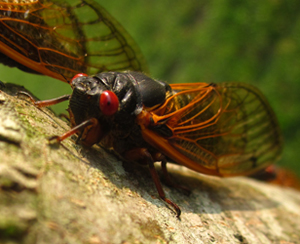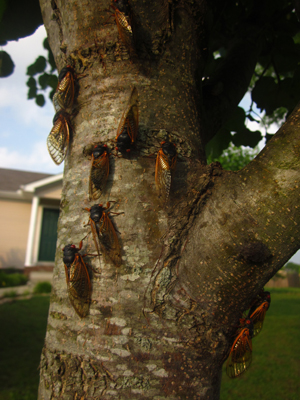For the past couple of months, the hoopla surrounding the arrival of the dreaded cicadas filled airwaves louder than the noisy bugs themselves.
Slowly they emerged, albeit by the hundreds, in early May. I remember hearing them, but didn’t see very many.
I left for a mini-vacation to the beach, and my eardrums were soothed with the sounds of the waves washing ashore the sandy shoreline. But boy were they shocked back into reality upon my return to Middle Tennessee. The sound was so deafening that I found myself shouting just to be heard.
Eventually, the noise—and the not-so-bright flying insects that seemed to run into everything, including my face, arms and chest—became commonplace. Their music actually took me back to my childhood days spent playing in the front yard of my grandparents’ home.
With the 13-year cycle nearing its end (the cicadas are dying off and should be gone by mid-June), I find myself wondering what we’ll do with all the empty air.
My mami, Carmen, wondered the same thing, though in a much more eloquent fashion.
“As someone who enjoys sitting on my porch swing in the evenings, I’m going to miss the background symphony that the cicadas played for me,” she said.
“We will be left with an emptiness in the air that I didn’t realize existed. They added fullness to nature that I will miss.”
It was reported that the cicadas’ songs, at their loudest, registered a whopping 86 decibels—a level comparable to a train whistle or heavy city traffic. Anybody working outside for extended periods of time could be affected, and I’m sure the squirrels were equally affected and annoyed.
In fact, that’s the most harm they can have on humans. They’re more of a nuisance than anything. Cicadas don’t bite or sting, but they sure can make you look like a fool for screaming and swatting at them.
Now trees on the other hand can be affected rather dramatically, specifically younger blossoming and fruiting trees. Female cicadas lay eggs in the limbs of smaller trees—as many as 400 to 600 eggs in up to 20 slits on each branch. Eventually the branch wilts and dies.
At this point, there’s nothing you can do about the trees, says Valley Growers manager Susie Tramel.
“They bore those holes in the trees . . . I really don’t know if it’s going to be able to be saved,” she said. “But we’ve been through this before, and honestly, I think they’re going to kind of die and go away, and most things will be fine.”
While a nuisance to most, cicadas are filling the bellies of critters—and some humans—across the state. Tramel said she witnessed carp swimming to the top levels of Stones River to munch on the crunchy cicadas.
I’ve got one pup that’s having a great time pouncing on them, too. Sophie swats them down and then swallows ‘em up. After a dozen cicadas made their way into her tummy, I called the vet to make sure they wouldn’t harm her.
“They’re not toxic, and the only thing that they can get is some upset (stomach) because the cicadas’ exoskeletons are hard, and they can upset the GI track,” said Terri Manning, a nurse at Animal Care Veterinary Hospital.
Guess that means my other pooch, Sebastian, and I will sit back and let Sophie continue to entertain herself—and us.















